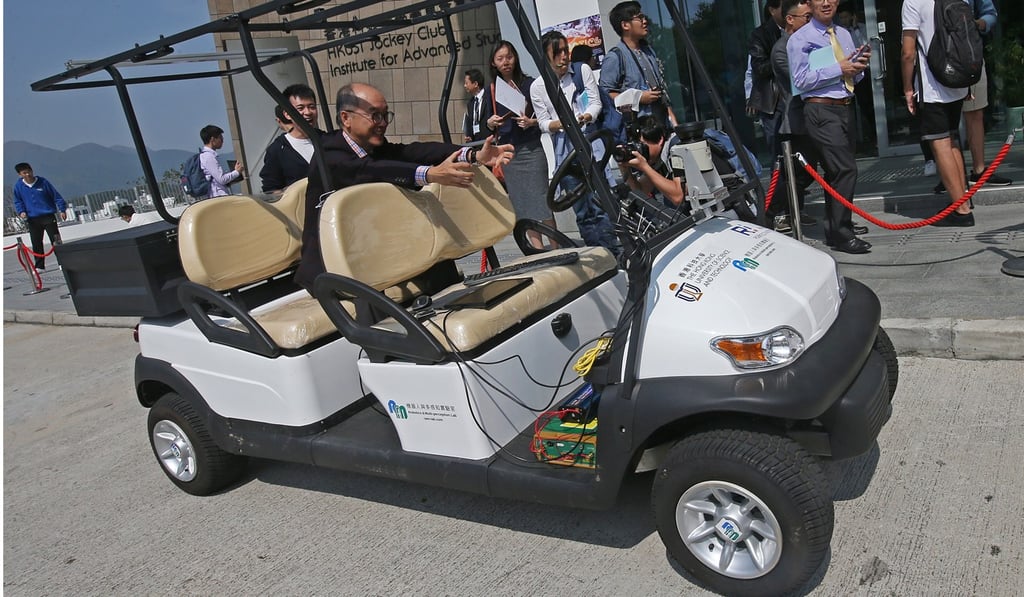Hong Kong should put pedestrians first, not cars – driverless or otherwise
Oren Tatcher is glad Hong Kong is not rushing to embrace the trend of automated vehicles, as their introduction is likely to reinforce the lamentable segregation of people and vehicles in the city’s urban planning


Hong Kong officials must show innovation drive
According to Professor Liu, “Hong Kong’s traffic situation is perfect for autonomous vehicles because roads are marked and separated clearly.” He is spot on: with pedestrian bridges, subways and fenced-off footpaths, Hong Kong is primed for the kind of vehicle/people separation that the promoters of driverless cars can only dream of in more pedestrian-friendly cities such as San Francisco, Paris or Tokyo. Ironically, it is probably precisely the habit of enforcing this relentless separation – ostensibly in the name of safety, but really to maximise the flow of traffic – which stopped Transport Department officials from granting Professor Liu and his team the testing licence. One imagines that, in their minds, our city’s intrepid pedestrians are not yet sufficiently fenced off from the carriageway to allow them to interact with computer-guided vehicles.
Why fear is the biggest obstacle to a future of driverless cars
With billions being spent on research and development – from Shenzhen to Detroit, Yokohama to Stuttgart – one could be forgiven for believing that the widespread adoption of autonomous vehicles is just around the corner, so we had better get on with the programme. Of course, many have sounded words of caution, commenting on the regulatory hurdles, in particular the sticky issue of assigning liability in the case of incidents. One also wonders how the lengthy transition period, when roads are simultaneously occupied by vehicles driven by people and autonomous ones, will be handled, assuming any number of potentially deadly scenarios when human fickleness (or resourcefulness) comes up against cold algorithms.
Watch: Singapore’s first test centre for autonomous vehicles
But perhaps the most overlooked concern about driverless vehicles is the impact they could have on our cities. The problem is simple enough: a car, even without a driver, is still a big hunk of metal moving in public space; to achieve any meaningful standards of speed, efficiency and safety, driverless cars want to minimise as much as possible any interaction with those unpredictable and fragile creatures called pedestrians and cyclists. For that, the more physical separation, the better, ideally in the form of pedestrian bridges, subways, and extensive fencing of pedestrian zones. One can imagine future cities where certain arteries become rivers of autonomous vehicles, with a parallel but non-intersecting system of “people spaces”.
Whether you think of such a cityscape as utopian or dystopian, the idea is hardly new. Indeed, the late, great Swiss-French architect Le Corbusier must be laughing in his grave: his 1920s Ville Radieuse concept envisioned just such a city, where people lived in residential slabs connected by bridges floating above 16-lane roads. While the cars in his evocative sketches were presumably driven by humans, one imagines that the young architect, who defined modern houses as “machines for living”, would be perfectly comfortable with the idea of self-driving cars. Mid-century planners, inspired by Le Corbusier, went on to prescribe urban developments shaped around cars and their strict separation from people, causing enormous damage to the urban fabric and continuity of traditional cities all over the world, and ultimately leading to the backlash of anti-highway movements in the West.
